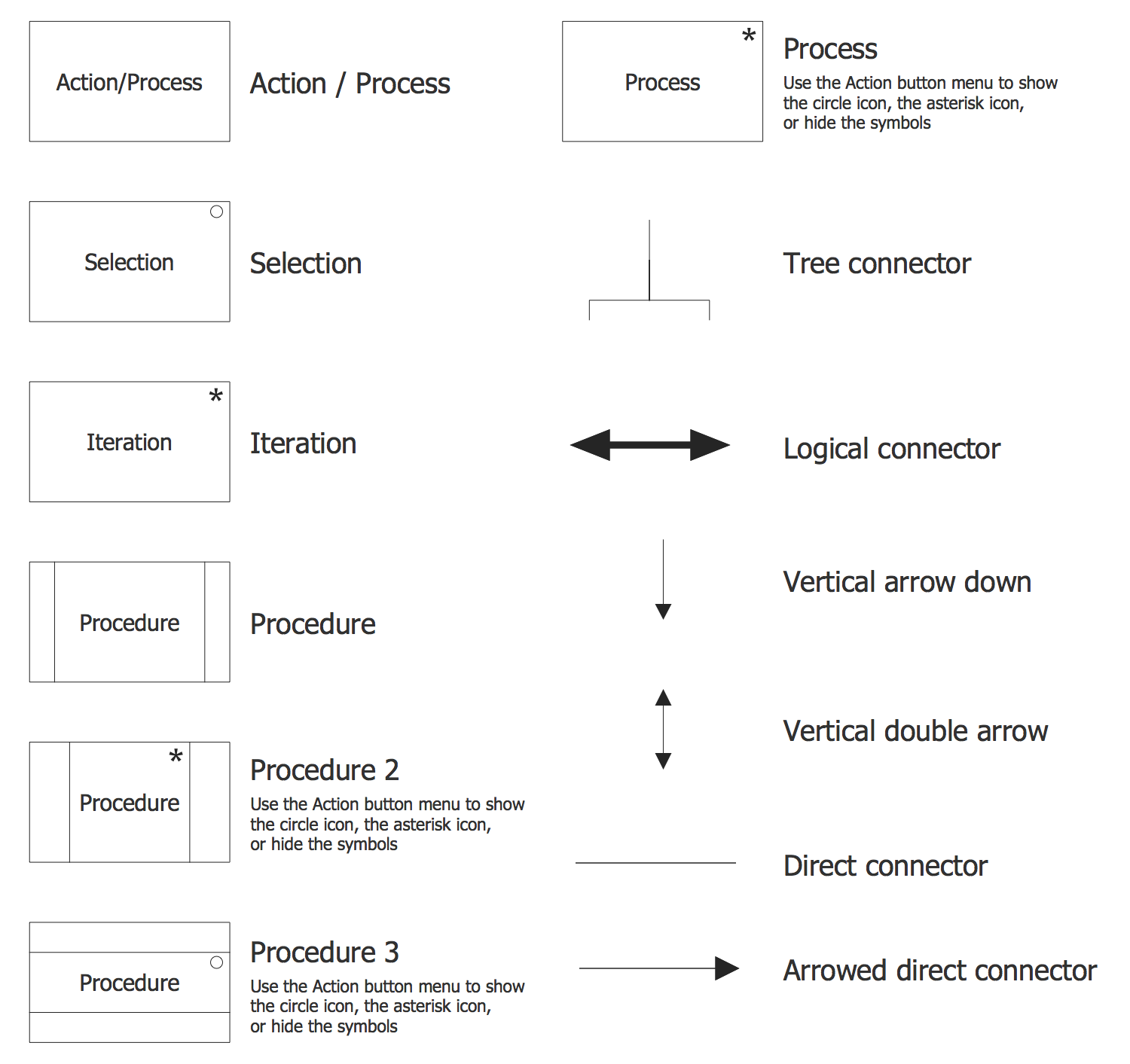Program Structure Diagram
A Structure Chart in organizational theory as well as in the software engineering is known to be a chart used for showing the breakdown of some particular system all the to its lowest manageable levels. Such levels may be used in a structured programming for arranging the program modules into a “tree”. Each of the modules is represented in a way of a box. Such box contains the module's name and the whole tree structure visualizes the relationships between the mentioned modules.
Any structure diagram or chart is widely used as a top-down modular design tool. It is constructed of squares that all represent the different modules in the system. There are also the lines that connect all these modules. The described lines represent the connections as well as the ownership of different activities. The sub-activities may be also represented with the help of the lines same way they are used in the org charts.
In any structured analysis, structure charts are commonly used in order to specify the high-level design of some particular computer program. As a design tool, these diagrams aid the programmer in conquering and dividing some large and complicated software problem. It allows breaking a problem down into small parts so they can become well understood by a human brain.
The process is called “top-down design”. It may be also described as a so-called “functional decomposition”. Many programmers use a structure chart for building a program in a manner that is similar to the way an architect uses a blueprint in terms of building a house. The program structure diagram can be drawn and used in the design stage as a way for both the clients and the software designers to communicate.
A structure diagram depicts the complexity and the size of the system, the number of the readily identifiable modules and functions as well as whether each of such functions is a manageable entity. Unless the functions are manageable entities, they should be broken down into some smaller components.
Any program structure diagram may be also used to diagram some associated elements. Such elements should be able to comprise a thread or a run stream. Being often developed as a hierarchical diagram, such elements may be represented in some other drawing way as well. Any representation must describe the breakdown of the configuration system into subsystems. A complete and accurate structure diagram may be the key to the process of determining the configuration items.
A visual representation of the configuration system, as well as the internal interfaces among such drawing’s CIs, may be always done with the help of the professional tool, such as the ConceptDraw DIAGRAM diagramming software. The structure diagram may be used for identifying the CIs as well as their associated artifacts. Doing it with the aid of ConceptDraw DIAGRAM as well as its extension (the Jackson Structured Programming (JSP) Diagrams solution) may simplify anyone’s work of making such diagrams.

Example 1. Program Structure Diagram
Any structure chart can be developed by, first of all, creating its structure. It is expected to place the root of an upside-down tree. The last-mentioned tree is the one known to be forming the needed program structure diagram. Next, the conceptualization of the main sub-tasks must be performed by the program in order to solve the given problem.
While creating the program structure diagrams, any programmer must be focused on each of the sub-tasks individually. He should conceptualize the way each of the tasks being broken down into even smaller ones. Having the finally broken-down program to a point where the leaves of the “tree” become representing simple methods, they can be coded with only a few program statements.
Usually, first of all, there is a need for checking whether a Structure Diagram has been already developed before. In case it was, any expert needs to review such drawing in order to ensure that it represents the current structure. Unless it does, the updates need to be done to the diagram where needed.
Any data structure in computer science is known as a way of organizing and storing data in a computer. Making this data more efficiently in this way seems to be one of the best options of what to do with it. Different kinds of data structures may be well-known for fitting different applications. Some of them may be highly specialized to some definite, specific tasks. An example may be the B-trees that are particularly well-suited for implementing the databases.
Data structures are known to be the best widely used tool for providing the needed means for managing the large amounts of data in an efficient way. These amounts of data may be internet indexing services and large databases. The efficient data structures may be a key to designing some efficient algorithms to be used in a computer science. Some programming languages and formal design methods may outline the data structures, not the algorithms, being the main thing that helps with organizing in software design. Both retrieving and storing can be carried out on data stored in secondary and in main memory.

Example 2. Jackson Structured Programming Symbols
The Jackson Structured Programming (JSP) Diagrams solution from ConceptDraw Solution Park provides the stencil library of design elements as well as multiple pre-made templates of the diagrams. They all can be used for quick drawing the needed diagrams of programs. The design objects from this solution may be also used while working in the ConceptDraw DIAGRAM diagramming and vector drawing software.



